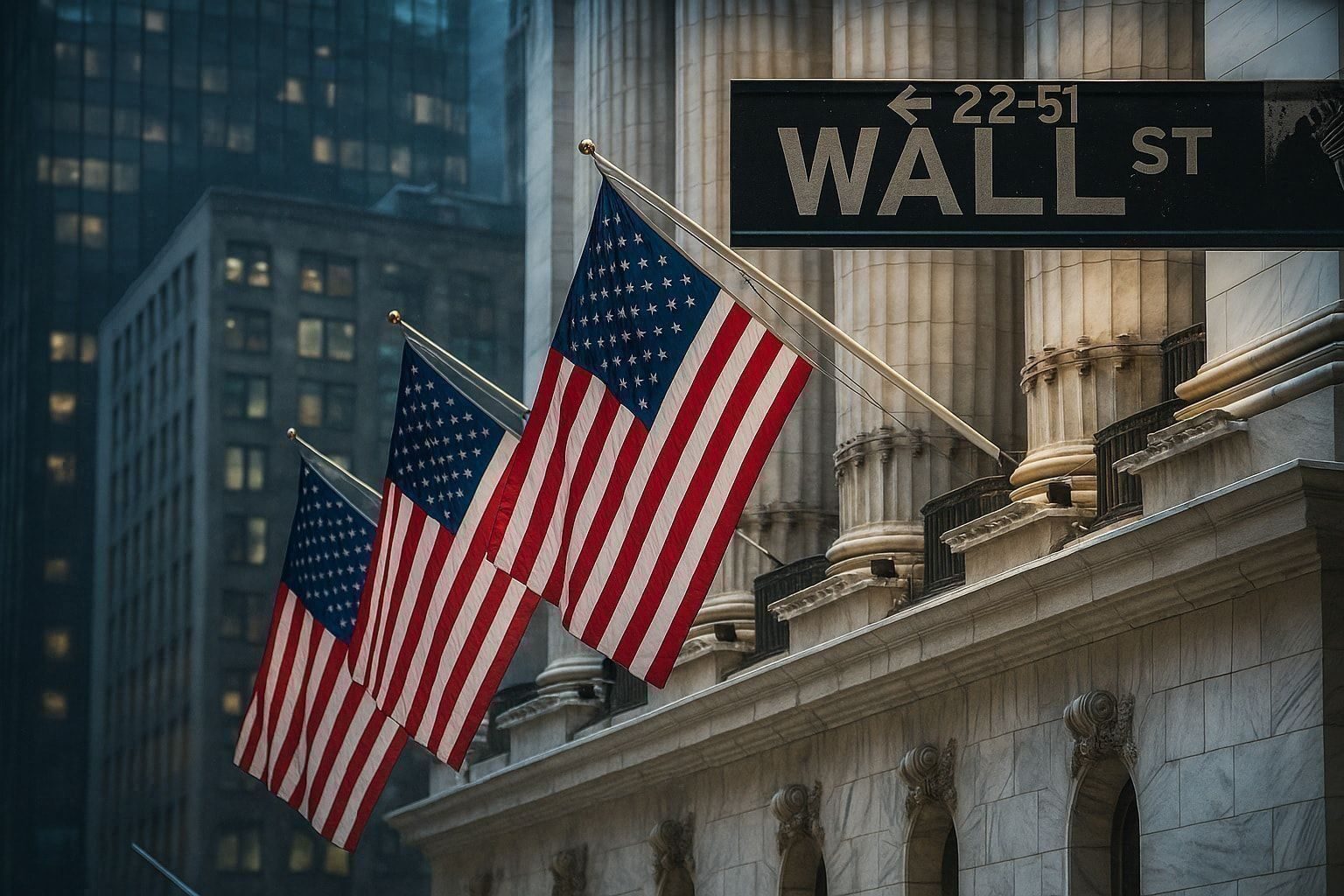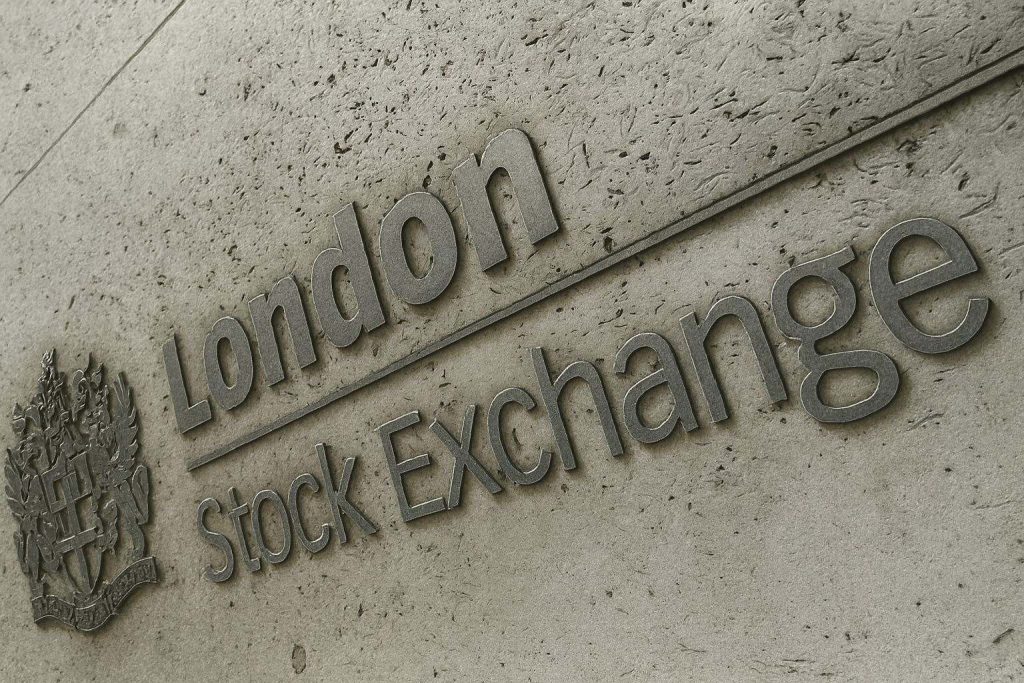U.S. stocks climbed again on Wednesday, November 26, 2025, with all three major indexes logging a fourth straight day of gains as investors doubled down on expectations of a Federal Reserve rate cut in December ahead of the Thanksgiving market break. [1]
Key takeaways for November 26, 2025
- All major indexes rose for a fourth day in a row. The Dow Jones Industrial Average gained about 0.8% to roughly 47,500, the S&P 500 added around 0.8% to about 6,820, and the Nasdaq Composite climbed roughly 0.9%to near 23,200. [2]
- Traders now see roughly an 80–85% chance of a December Fed rate cut, after mixed but generally softening economic data and a cautious Fed Beige Book. [3]
- Tech and AI‑linked stocks led the advance. Dell Technologies, Nvidia, Microsoft, Broadcom and Robinhood all posted strong gains, powered by record AI server demand and new trading products. [4]
- Earnings losers weighed on pockets of the market. Workday sank on cautious guidance, Deere slid on tariff‑hit profit forecasts, and HP fell after unveiling up to 10% workforce cuts as part of its AI pivot. [5]
- Macro backdrop: durable goods orders and core capital‑goods data signal resilient business investment, even as weekly jobless claims fall to a seven‑month low and the Fed’s Beige Book depicts a cooling but not collapsing economy. [6]
Indexes log a fourth straight gain ahead of Thanksgiving
Wednesday’s session extended the rebound that began earlier in the week, helping Wall Street recover from last week’s tech‑led wobble over frothy AI valuations.
- The Dow Jones Industrial Average rose about 0.8%, adding nearly 390 points to finish around 47,501.
- The S&P 500 advanced roughly 0.8% to about 6,819.
- The Nasdaq Composite climbed close to 0.9%, ending near 23,224. [7]
Breadth was notably strong. On the New York Stock Exchange, winners outpaced losers by more than 3–4 to 1, and the S&P 500 recorded dozens of new 52‑week highs and no new lows, underscoring how broad the advance has become. [8]
The rally comes in a holiday‑shortened week:
- U.S. stock and bond markets are closed on Thursday for Thanksgiving.
- Equities will open for a half‑day on Friday, with the stock market set to close at 1 p.m. ET and bonds at 2 p.m. ET. [9]
Lighter, pre‑holiday volumes likely amplified intraday swings but didn’t change the underlying narrative: investors are increasingly pricing in a friendlier Fed in the near term.
Macro backdrop: data supports, but doesn’t guarantee, a December Fed cut
Jobless claims: layoffs low, hiring cooler
Fresh labor‑market data showed initial jobless claims fell to about 216,000 for the week ended November 22, the lowest in seven months and down 6,000 from the prior week. [10]
- The low level of new claims signals that layoffs remain historically subdued.
- But continuing claims have crept up toward 1.96 million, a sign that finding new jobs is getting harder even if people aren’t being fired en masse. [11]
This combination – weak hiring but few layoffs – fits the Fed’s description of a labor market that is “softening” rather than cracking, and it complicates the debate over whether another rate cut is needed as soon as December.
Durable goods and capex: businesses are still spending
Delayed government data, released Wednesday after the recent shutdown, showed September durable‑goods orders rose 0.5% month‑over‑month, following a strong revised 3.0% gain in August. [12]
Under the hood:
- Core capital‑goods orders (non‑defense, ex‑aircraft) jumped 0.9%, and shipments rose by the same amount. [13]
- Ex‑transportation, durable orders rose 0.6%, beating expectations. [14]
That kind of strength in capex – especially in areas tied to automation and AI – is one reason economists still expect solid GDP growth in Q3, with some estimates near 4% annualized, even as consumers grow more cautious. [15]
Beige Book: economy “little changed,” consumers still under pressure
On Wednesday, the Fed released its latest Beige Book, a survey of anecdotal conditions across the 12 regional Federal Reserve districts. The national summary described economic activity as “little changed” since the prior report: [16]
- Consumer spending continued to soften, particularly among lower‑ and middle‑income households, even as higher‑end spending stayed more resilient.
- Manufacturing showed modest improvement in some districts, with AI‑related data‑center demand offsetting tariff‑related headwinds in other sectors. [17]
- Labor markets cooled slightly, with more districts reporting weaker hiring and some firms leaning on hiring freezes and attrition instead of layoffs.
- Prices rose at a moderate pace, with tariffs and higher insurance, energy and healthcare costs still putting pressure on margins. [18]
In other words, the Beige Book paints a picture of an economy that is slowing at the margins but not rolling over, which gives the Fed room to cut – but not a slam‑dunk reason to do so.
Rate expectations and a divided Fed
Fed‑watchers have spent the week parsing speeches and data to gauge what happens at the December 9–10 FOMC meeting.
- Futures markets now imply around an 80–85% probability of a 25‑basis‑point cut next month, up sharply from about 50% just a week ago. [19]
- A Reuters analysis highlighted how conflicting messages from Fed officials – some pointing to labor weakness, others urging patience on inflation – have sparked a surge in hedging via swaptions and SOFR options as traders prepare for either outcome. [20]
This policy uncertainty also ripples into other markets:
- The 10‑year Treasury yield hovered around 4.0% on Wednesday, roughly in line with recent closes. [21]
- Gold traded near an over one‑week high, with spot prices around $4,160–4,200 per ounce as investors sought non‑yielding assets that benefit from lower‑rate expectations. [22]
- Oil prices were little changed after sliding to a one‑month low on worries about oversupply and tentative Ukraine peace‑talk headlines. [23]
Tech and AI lead the charge on Wall Street
Big tech rebounds as the AI trade regains traction
After last week’s wobble, AI‑linked megacaps and infrastructure names were back in favor.
- Dell Technologies surged around 5–7% after reporting better‑than‑expected earnings and raising its full‑year revenue outlook, driven by record orders for AI‑optimized servers and infrastructure. [24]
- Nvidia, still the market’s most closely watched AI bellwether, bounced roughly 1–2%, recovering a chunk of Tuesday’s slide that had been sparked by reports suggesting big tech customers are exploring Google’s in‑house AI chips. Nvidia countered that its own hardware remains “a generation ahead,” and traders seemed willing to give it the benefit of the doubt. [25]
- Microsoft and Broadcom both added around 2–3%, riding the same AI‑capital‑expenditures wave that is driving strong demand for cloud, networking and accelerator chips. [26]
Sector‑wise, information technology was the top gainer in the S&P 500, helping pull the broader market higher even as some communication‑services names lagged. [27]
Robinhood and “new markets” trading boom
One of the day’s standout movers was Robinhood Markets:
- The online brokerage jumped roughly 9–11%, its best single‑day move in months, after announcing plans to expand into prediction and derivatives markets, including the takeover of a regulated exchange run by Miami International Holdings and a planned futures and options exchange launch. [28]
The stock is now up well over 200% year‑to‑date, having evolved from meme‑era brokerage to a broader trading platform spanning crypto, options and soon, if regulators approve, prediction contracts. [29]
Retail winners: Urban Outfitters and Petco
Consumer stocks also got in on the rally:
- Urban Outfitters surged 12–15% after delivering better‑than‑expected earnings and telling investors that November sales have been “robust,” helped by shoppers waiting for promotions and then spending aggressively once holiday deals hit. [30]
- Petco exploded nearly 20% higher after raising its full‑year earnings outlook, even as its latest quarter showed a mixed sales picture. Traders focused on the improved guidance and signs that pet‑care spending remains resilient. [31]
These moves reinforce a theme running through recent data and Fed commentary: higher‑income and niche discretionary spending remains fairly healthy, even as lower‑income households feel the pinch of elevated prices and fading excess savings. [32]
The laggards: Workday, Deere and HP highlight pockets of stress
The rosy index moves masked some sharp individual declines.
Workday: strong quarter, weak reaction
Cloud‑software provider Workday actually beat Wall Street expectations on both revenue and earnings and posted a hefty non‑GAAP operating margin. But the stock fell around 10%, on pace for its worst day since May, as investors zeroed in on cautious subscription‑revenue guidance and an expensive valuation after a big run‑up. [33]
Options activity was intense, with volumes several times average and heavy put trading around the $210 strike – a sign that some traders are positioning for continued volatility. [34]
Deere: tariffs and the farm down‑cycle bite
Deere & Co. delivered better‑than‑expected fourth‑quarter earnings, but its outlook stole the show – in a bad way.
- Management forecast fiscal‑2026 net income well below analyst expectations, citing tariff‑driven cost pressures, falling crop prices and a down‑cycle in large agricultural equipment. [35]
- Shares dropped roughly 5%, putting the stock on track for its worst daily performance since August, even though it still holds a double‑digit gain for 2025 as a whole. [36]
Deere’s commentary dovetails with Beige Book anecdotes about tariffs squeezing margins and depressing demand in parts of the manufacturing and agriculture complex. [37]
HP: AI pivot comes with job cuts
Computer and printer maker HP stayed under pressure after announcing late Tuesday that it plans to eliminate 4,000–6,000 jobs – up to about 10% of its workforce – by fiscal 2028, as part of a $1 billion cost‑cutting drive centered on AI adoption and automation. [38]
Despite posting better‑than‑expected earnings, HP’s muted outlook and the sheer scale of the restructuring reminded investors that the AI boom can also mean painful transitions for legacy business models and workers.
Global context: supportive but watch the currencies
Wall Street’s rally was mirrored in overseas markets:
- In Europe, major indexes like Germany’s DAX and France’s CAC 40 climbed around 0.9–1.1% as investors piggybacked on U.S. tech strength and bets on easier Fed policy. [39]
- In Asia, Japan’s Nikkei 225 jumped about 1.9%, helped by the same AI optimism and expectations that the Bank of Japan will move slowly even as it prepares markets for a possible rate hike. [40]
Currency markets showed a more nuanced story:
- The yen weakened against the dollar after an initial bounce on BoJ‑hike speculation, as traders weighed domestic politics against pressure to rein in the currency slide. [41]
- Sterling strengthened, helped by a U.K. budget that nudged gilt issuance higher but didn’t spook bond markets. [42]
For U.S. investors, the main implication is that global financial conditions remain broadly supportive of risk assets – at least for now – as central banks move cautiously and AI‑related investment spreads across regions.
What today’s move means for investors
Put together, November 26, 2025 looked like a classic “Goldilocks” session for the U.S. stock market:
- Growth‑sensitive tech and AI names rallied on the back of strong earnings and capex,
- Macro data signaled slowing but not collapsing activity,
- And markets increasingly priced in a December Fed rate cut, even as policymakers themselves remain split. [43]
At the same time, the sharp drops in Workday, Deere and HP are a reminder that stock‑specific risk is still very real in a market trading near record highs and premium valuations. Companies that disappoint on guidance, reveal tariff pain, or announce restructuring tied to AI may see outsized downside, even if their headline numbers look strong.
As the U.S. heads into the Thanksgiving break and a shortened Black Friday session, investors will be watching:
- Any shift in Fed rhetoric as officials digest the latest Beige Book and data,
- Early reads on holiday spending, especially from mid‑tier retailers,
- And incoming indicators such as the November jobs report and updated GDP estimates that could confirm – or challenge – the “soft‑landing with AI tailwinds” narrative driving stocks right now. [44]
References
1. www.reuters.com, 2. www.reuters.com, 3. www.reuters.com, 4. apnews.com, 5. www.schaeffersresearch.com, 6. www.reuters.com, 7. www.reuters.com, 8. www.reuters.com, 9. www.investopedia.com, 10. www.reuters.com, 11. www.reuters.com, 12. tradingeconomics.com, 13. www.reuters.com, 14. www.nasdaq.com, 15. www.reuters.com, 16. www.federalreserve.gov, 17. www.federalreserve.gov, 18. www.federalreserve.gov, 19. www.reuters.com, 20. www.reuters.com, 21. www.investopedia.com, 22. www.reuters.com, 23. www.reuters.com, 24. apnews.com, 25. www.investopedia.com, 26. apnews.com, 27. www.reuters.com, 28. www.schaeffersresearch.com, 29. www.schaeffersresearch.com, 30. www.investopedia.com, 31. apnews.com, 32. www.federalreserve.gov, 33. www.schaeffersresearch.com, 34. www.schaeffersresearch.com, 35. www.reuters.com, 36. www.schaeffersresearch.com, 37. www.federalreserve.gov, 38. www.investopedia.com, 39. markets.financialcontent.com, 40. markets.financialcontent.com, 41. www.reuters.com, 42. www.marketscreener.com, 43. www.reuters.com, 44. www.federalreserve.gov








